
Published:
Readtime: 14 min
Every product is carefully selected by our editors and experts. If you buy from a link, we may earn a commission. Learn more. For more information on how we test products, click here.
We Aussies are suckers for anything caffeine-related, but apparently, there are more types of coffee than just a flat white and a long black. In fact, according to the experts, there’s upwards of 20, which sounds both unnecessary and indulgent, but navigating them effectively can be the difference between the best cuppa joe you’ve ever had and a steamy pool of sub-par bean juice. After all, baristas are the new fine-dining matradees.
We’ve all been there; waiting in line to order a brew and having a mini-panic attack because we’re still trying to come to terms with the different types of coffee, aromas and whatever the hell a piccolo is. But stress less, coffee and the elements that constitute the beverage aren’t rocket science. Using information from the experts at Webstaurantstore, we’ve put together a list of all of the types of coffees that’ll help you make a more confident decision when ordering for your daily grind.
You’ll also like:
How to Make Cold Brew Coffee That Actually Tastes Good
17 Best Coffee Shops & Brands in Australia
What is Ayahuasca? The South American Psychedelic that Took Megan Fox to “Hell”
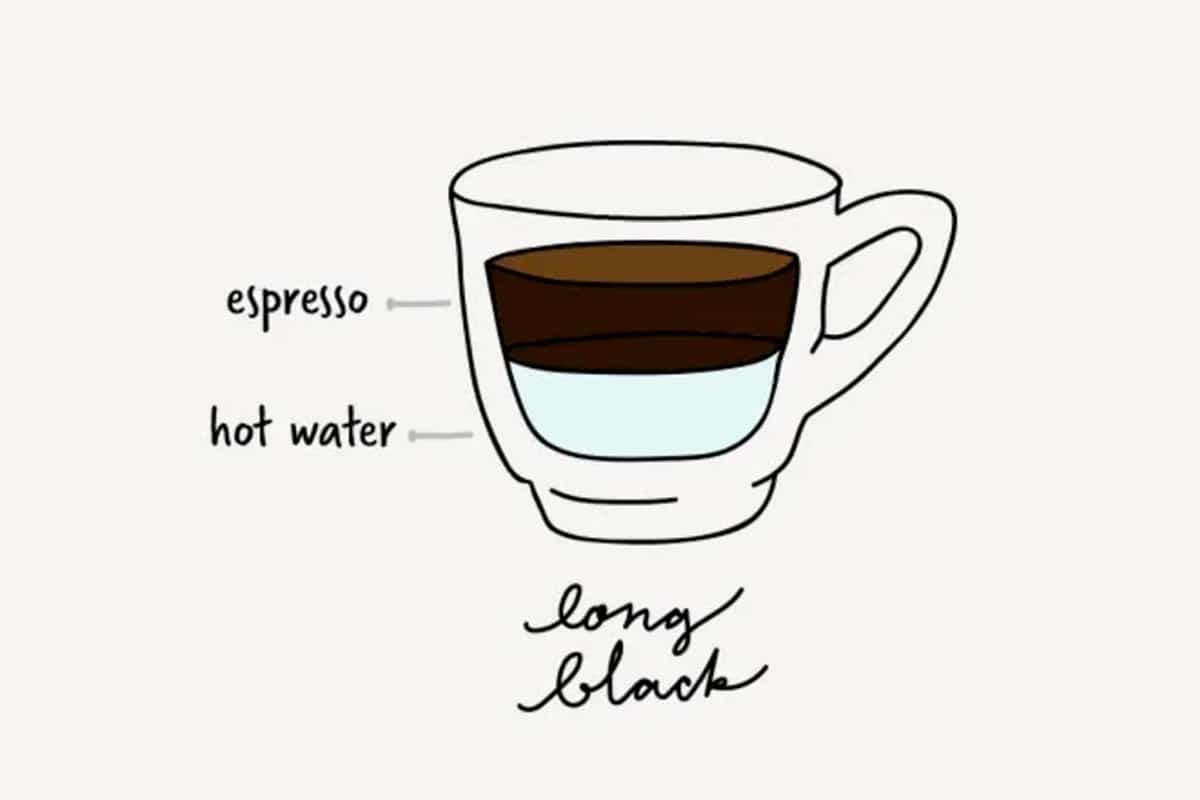
1. Long Black
The long black is an Aussie caffeine staple and is coveted for its strong aroma and taste. At first glance, the long black may look very akin to an americano. But after your first sip, you’ll get something far more flavoursome. The ingredients are the same in both: espresso and hot water. The difference, however, is in the preparation.
Ratio: 2 shots of espresso + 80 ml of hot water
Cup: 100-120 ml
Temperature: 90-95C
Place of origin: Australia
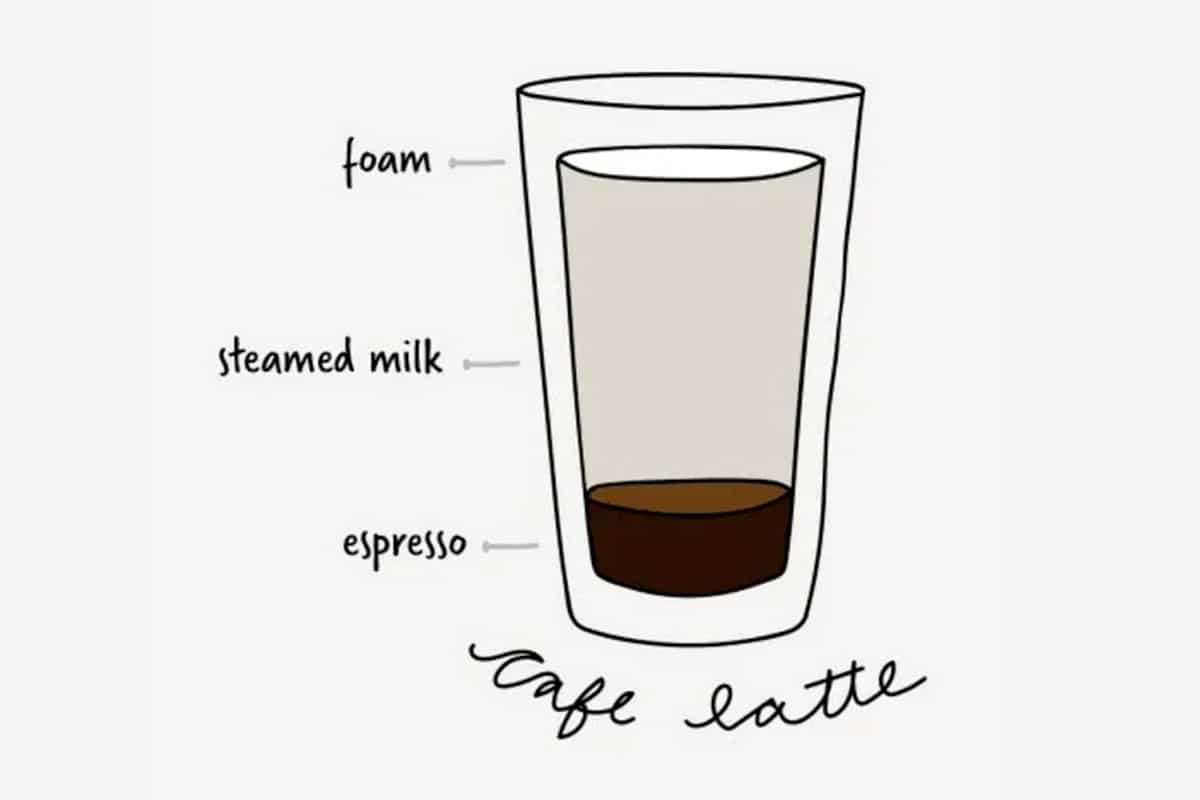
2. Latte
Lattes are usually considered to be an introductory coffee drink because their bitterness is cut by the amount of milk in the beverage. The latte is often complemented by syrups for those who enjoy sweeter drinks. As the most popular coffee drinks out there, the latte can be ordered plain or with a flavour shot of anything from vanilla to pumpkin spice.
Ratio: 1 shot of espresso + 200-250 ml of steamed milk + topped with foam
Cup: 250-300 ml
Temperature: 65-70C
Place of origin: Italy
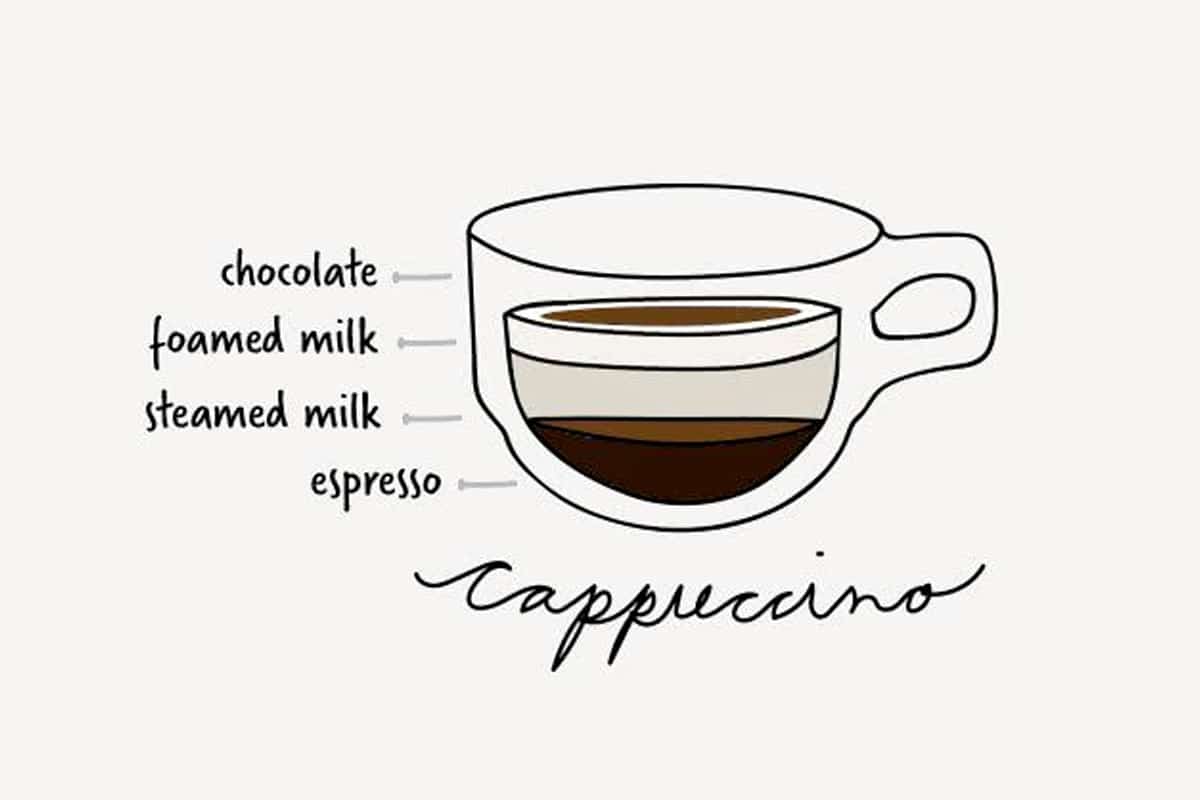
3. Cappuccino
Cappuccino is essentially a latte made with more foam than steamed milk and is often topped with a hit of cocoa powder or cinnamon. The cappuccino is a staple in coffee shops all over the world. It’s classically characterised as the perfect balance of rich, sweet milk and espresso. You’ll find variations that use cream instead of milk or ones that throw in flavour shot, as well.
Ratio: 1-2 shots of espresso + 50 ml of steamed milk + 50 ml of foamed milk + chocolate powder
Cup: 150-200 ml
Temperature: 90-95C
Place of origin: Italy
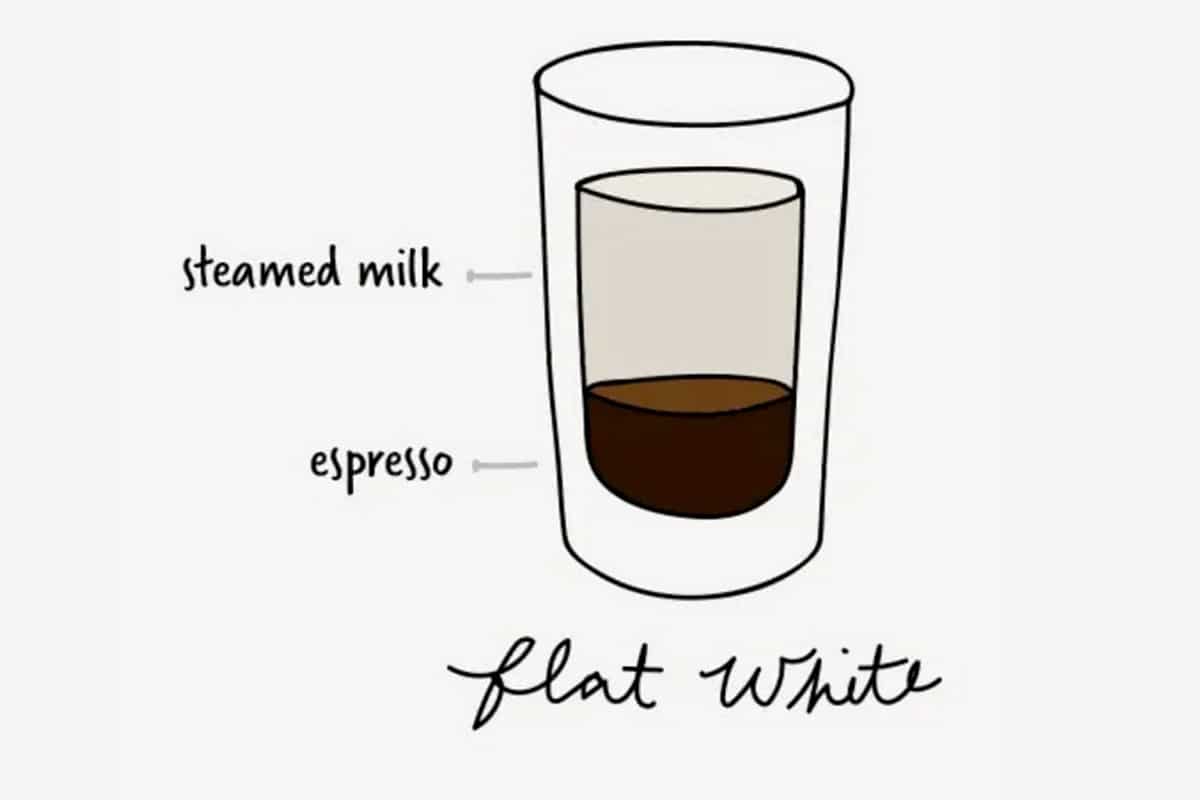
4. Flat White
Another Aussie favourite is the flat white. This bad boy is quite similar to a cappuccino but lacks the layer of foam and chocolate powder. A flat white is an espresso-based drink that contains steamed milk and is the perfect option for those looking for a dairy beverage with a strong taste and is made with a small and has a creamy mouthfeel of steamed milk.
Ratio: 1 shot of espresso + 120 ml of steamed milk
Cup: 150-240 ml
Temperature: 90-95C
Place of origin: Australia
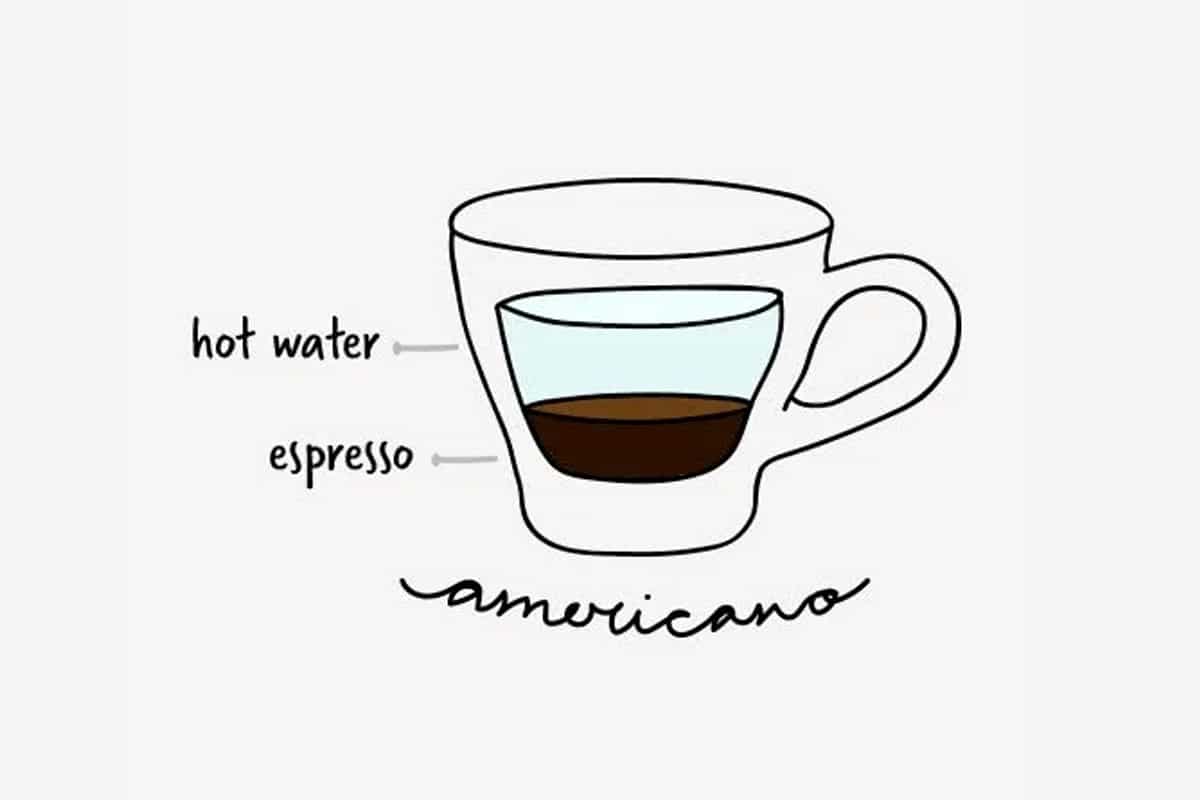
5. Americano
Americanos are the go-to coffee for those seeking that caffeine kick during sluggish midday. This type of coffee is notoriously high in caffeine and has a flavour profile similar to black coffee. So if you’re looking for a way to up the ante in your daily routine but aren’t interested in just other coffee, the Americano is a simple, classic cup of joe that’ll get you going every time.
Ratio: 1 shot of espresso + 80 ml of hot water
Cup: 50-100 ml
Temperature: 90-95C
Place of origin: United States

6. Espresso
Who doesn’t love an espresso? This coffee drink is distinguished for its concentrated flavour, syrupy content and layer of foam. The espresso is usually denser in taste than coffee brewed by other methods and has more caffeine than any other coffee on this list. Fun fact: the espresso is the base for many other coffee drinks—such as the caffè latte, cappuccino, macchiato, mocha, flat white, and Americano.
Ratio: 1 shot of espresso
Cup: 50-100 ml
Temperature: 90-95C
Place of origin: Italy
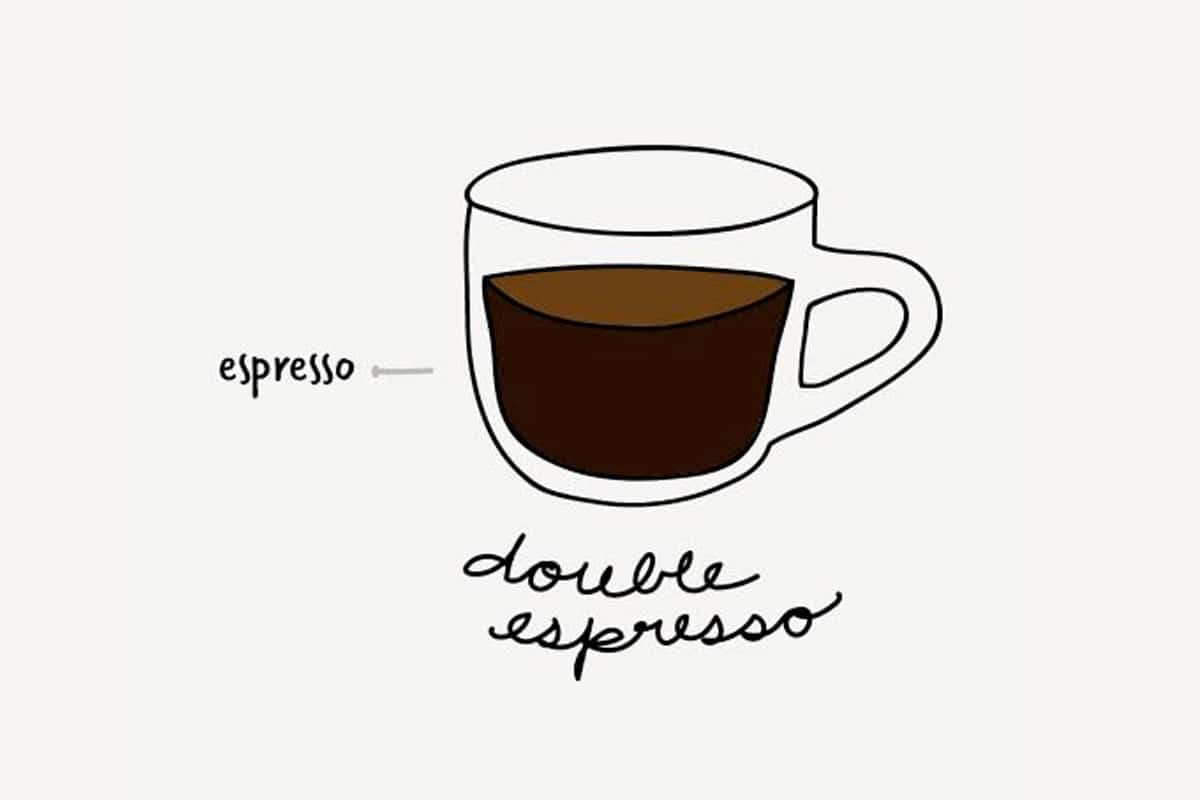
7. Doppio
Simply known as the double espresso, Doppio means “double” in Italian explains the commonly called a standard double — so double or nothing. The doppio is two espresso shots in one single-serve capsule. It has a stronger aroma and more intense taste and will satisfy a coffee craving of any size. So If you enjoy an intense and robust Italian-style espresso doppio is the coffee drink for you.
Ratio: 2 shots of espresso + 60 ml of espresso
Cup: 60-80 ml
Temperature: 90-95C
Place of origin: Italy
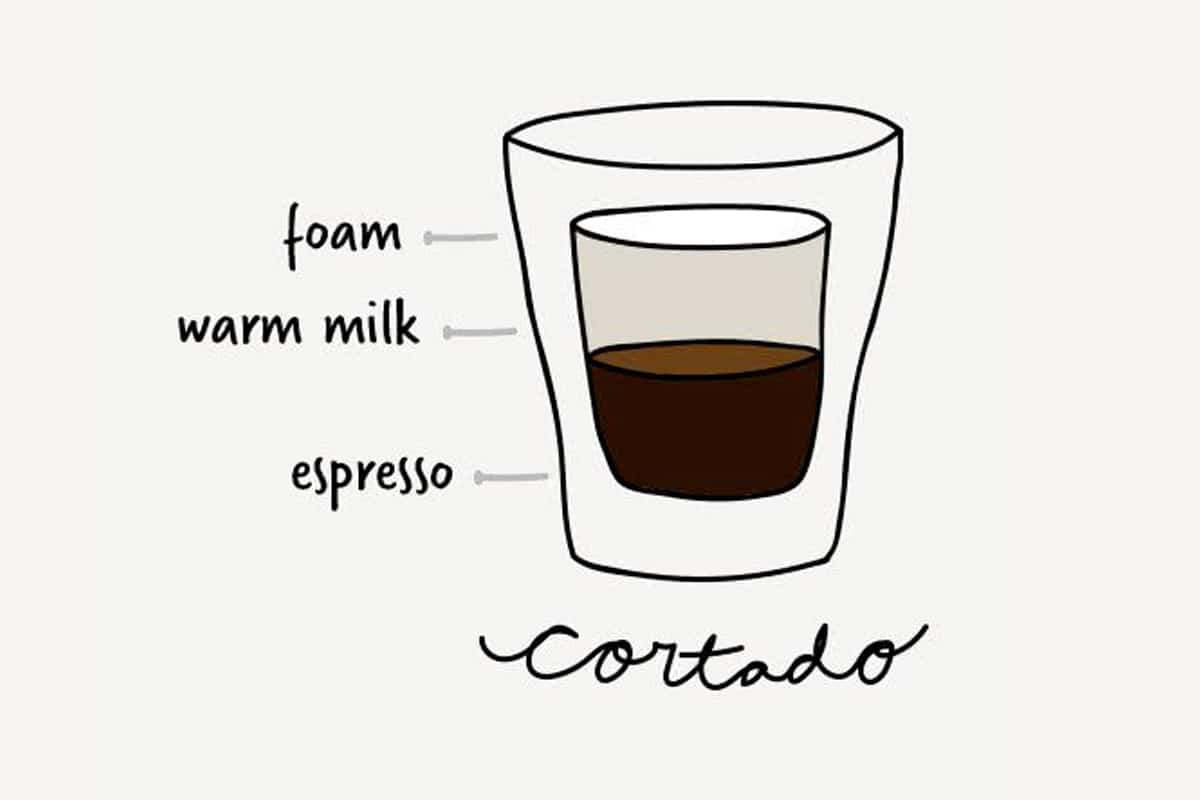
8. Cortado
Like yin and yang, the cortado is the perfect balance of espresso and warm steamed milk. Cortado is a Spanish type of coffee made by a ratio of espresso to milk that yields a unique flavour where the fineness of the coffee triumphs savour, while the finish is ever so delicate from the steamed milk. Cortado is also one of those coffees that are consumed leisurely in coffee shops.
Ratio: 2-4 shots of espresso + 100 ml of steamed milk
Cup: 120-150 ml
Temperature: 90-95C
Place of origin: Spain, Portugal & South America
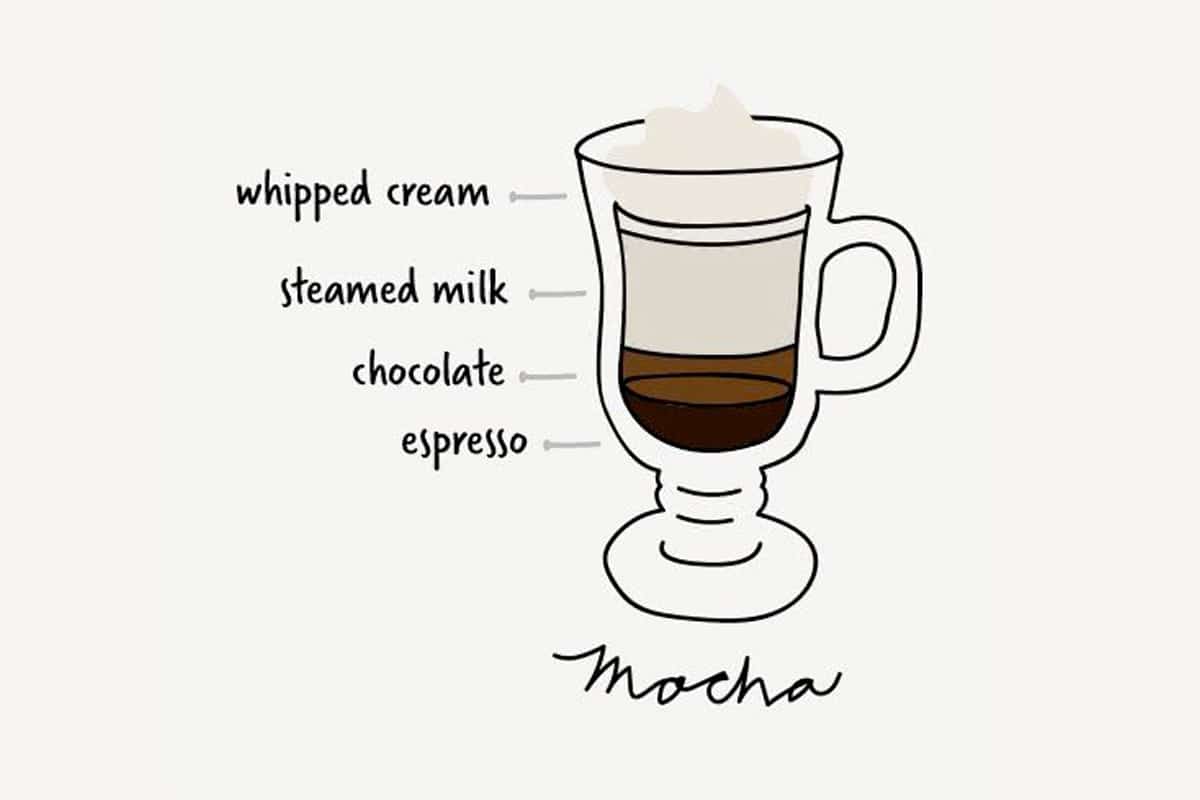
9. Mocha
The mocha is a chocolate espresso drink with steamed milk and foam and is an exquisite mix of coffee and hot chocolate. The chocolate powder gives the drink a potent and creamy flavour and axes the acidity of the espresso. FYI, the mocha is usually considered the status-symbol coffee drink ordered. So if you’re wanting a mix of coffee, hot chocolate and a hint of elegance, choose the mocha.
Ratio: 1 shot of espresso + 50 ml of chocolate powder + 50 ml of steamed milk + topped with foam
Cup: 150-250 ml
Temperature: 80-90C
Place of origin: Italy
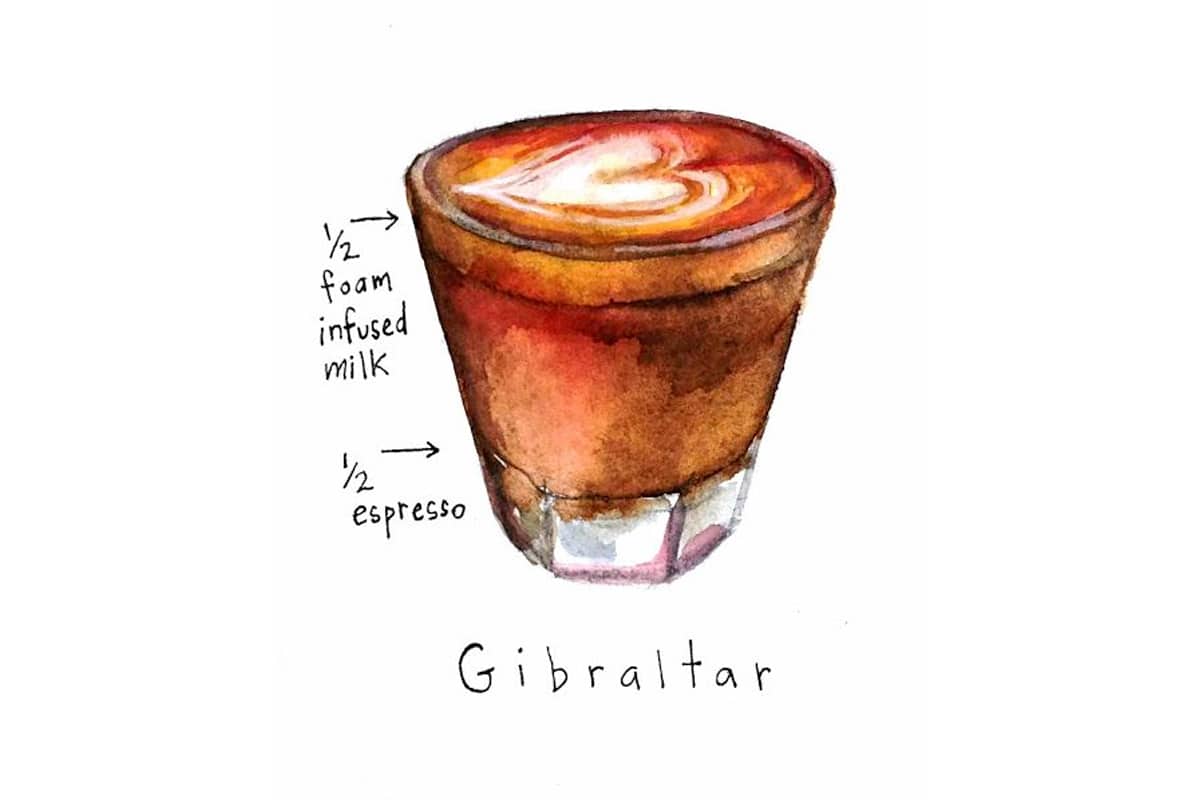
10. Gibraltar
A gibraltar is simply a double-shot of espresso with steamed milk, served in a glass tumbler glass that’s called a Gibraltar. This baby was born in San Francisco and quickly became a sensation for coffee connoisseurs, and eventually spread to other coffee shops, domestic and abroad. The gibraltar is celebrated for its jasmine aroma, lemony tang and smooth body.
Ratio: 2 shots of espresso + 80 ml of milk
Cup: 100-150 ml
Temperature: 90-95C
Place of origin: United States
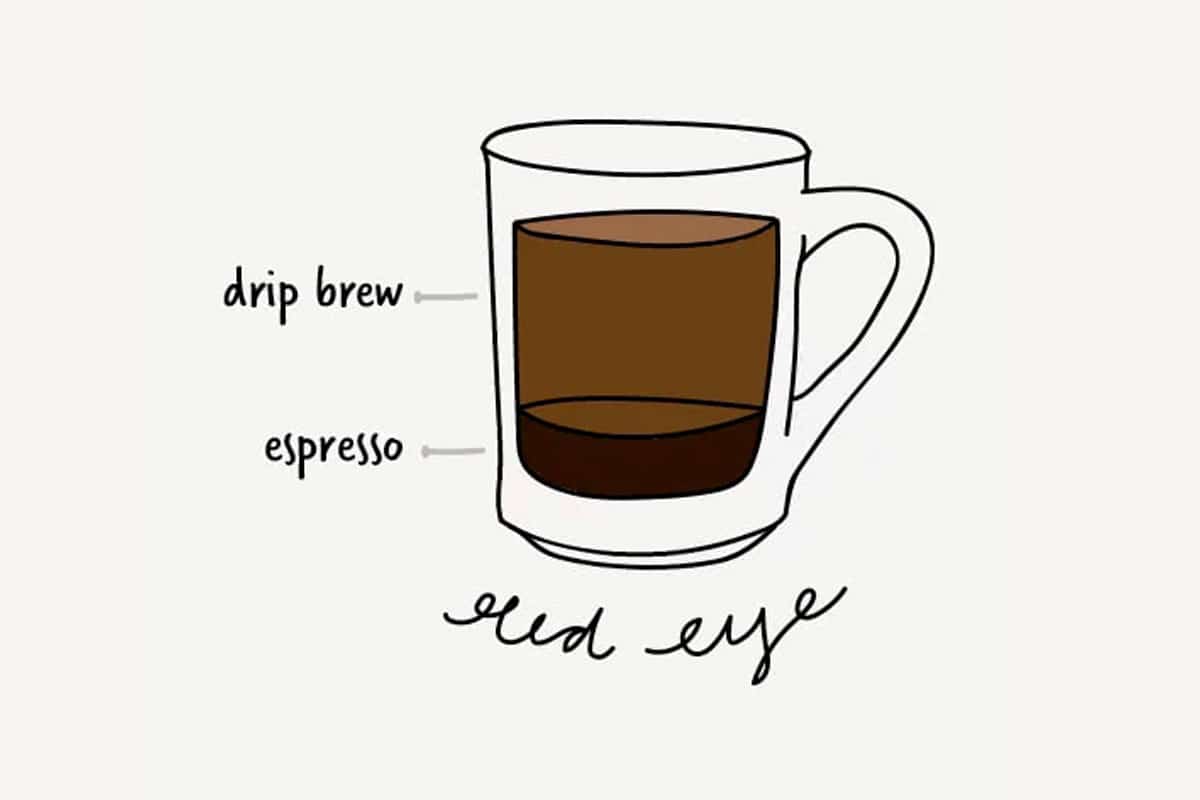
11. Red Eye
The red eye is an American type of coffee that combines brewed coffee with an espresso shot. This coffee combination is stronger than regular coffee and is a more potent stimulant that helps improve concentration and keeps you awake during the night when catching up on work & assignments. This coffee drink also has stronger variations such as the black eye, dead eye and green eye.
Ratio: 1 shot of espresso + 150 ml of drip-brewed coffee
Cup: 150-200 ml
Temperature: 90-95C
Place of origin: United States
12. Piccolo
Piccolo is an Australian coffee heavily concocted by European immigrants. The piccolo became trendy about a decade ago and has been a café staple ever since. For those whose caffeine addictions are in full swing and who drink a couple of cups a day, the piccolo is the perfect coffee drink to get the full flavour of your coffee without filling yourself up with too much milk during the day.
Ratio: 1 shot of espresso + topped up with steamed milk
Cup: 100-150 ml
Temperature: 80-90C
Place of origin: Australia
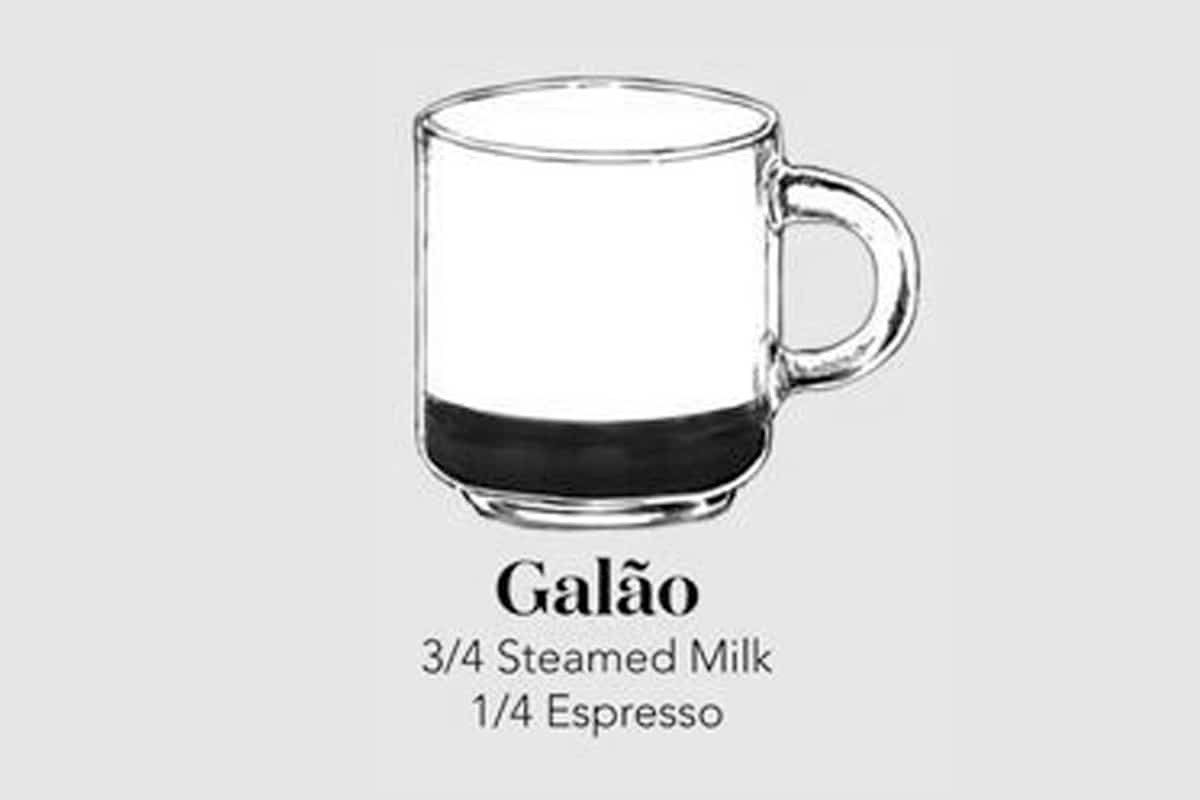
13. Galão
This Portuguese coffee drink is similar to a latte & cappuccino and is almost synonymous with breakfast — best enjoyed with hearty pastries. The galão is comprised of 1/4 espresso and 3/4 of foamed or steamed milk and is typically served in a tall glass. Its flavour profile is rich and creamy, though not pungent, and can be relished in the evenings when wanting to wind down.
Ratio: 1 shot of espresso + with steamed milk
Cup: 200-250 ml
Temperature: 90-95C
Place of origin: Portugal
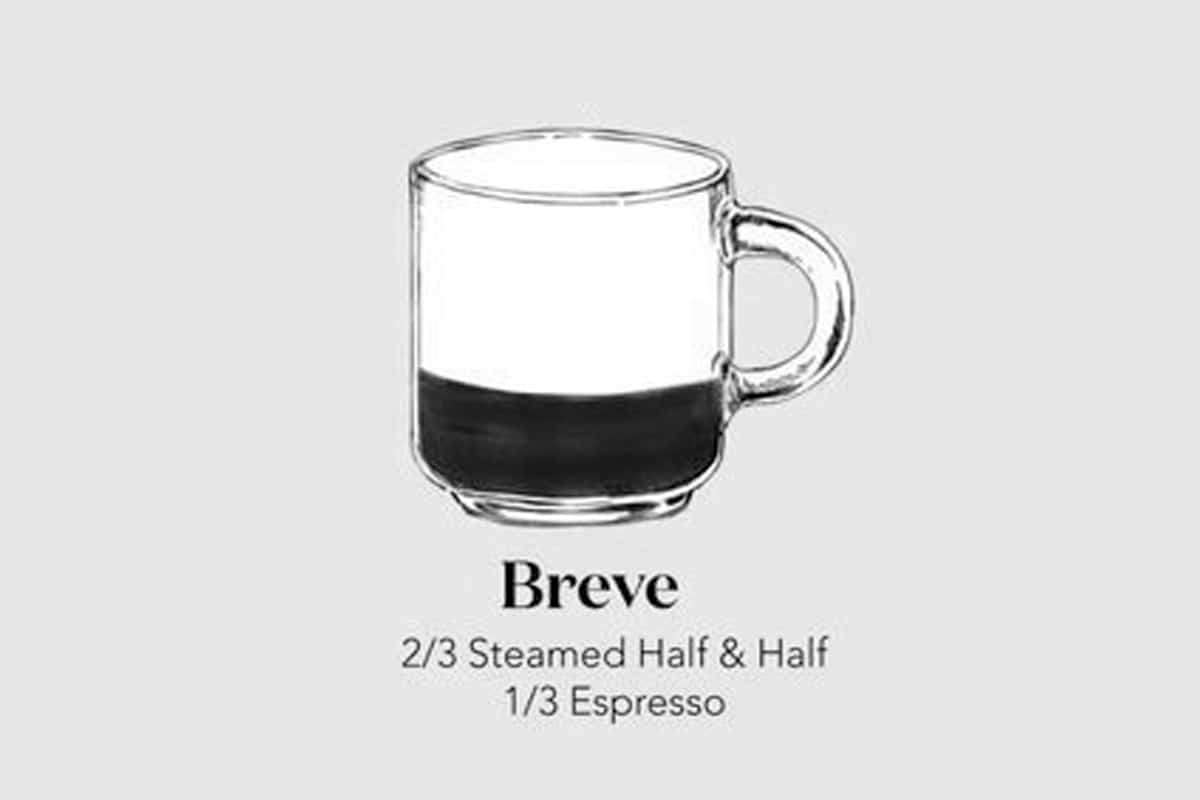
14. Breve
The breve is a decadent twist to the average espresso. Instead of milk, it contains steamed half-and-half to yield a rich and creamy flavour and is an Americanised take on the classic Italian cafe latte. This type of coffee drink is fluffier than the average latte and is typically served as a dessert beverage. But if you’re someone who likes it sweet and fluffy, then, by all means, enjoy a breve!
Ratio: 1 shot of espresso + 80 ml of steamed half-and-half + topped with foam
Cup: 150-200 ml
Temperature: 90-95C
Place of origin: United States
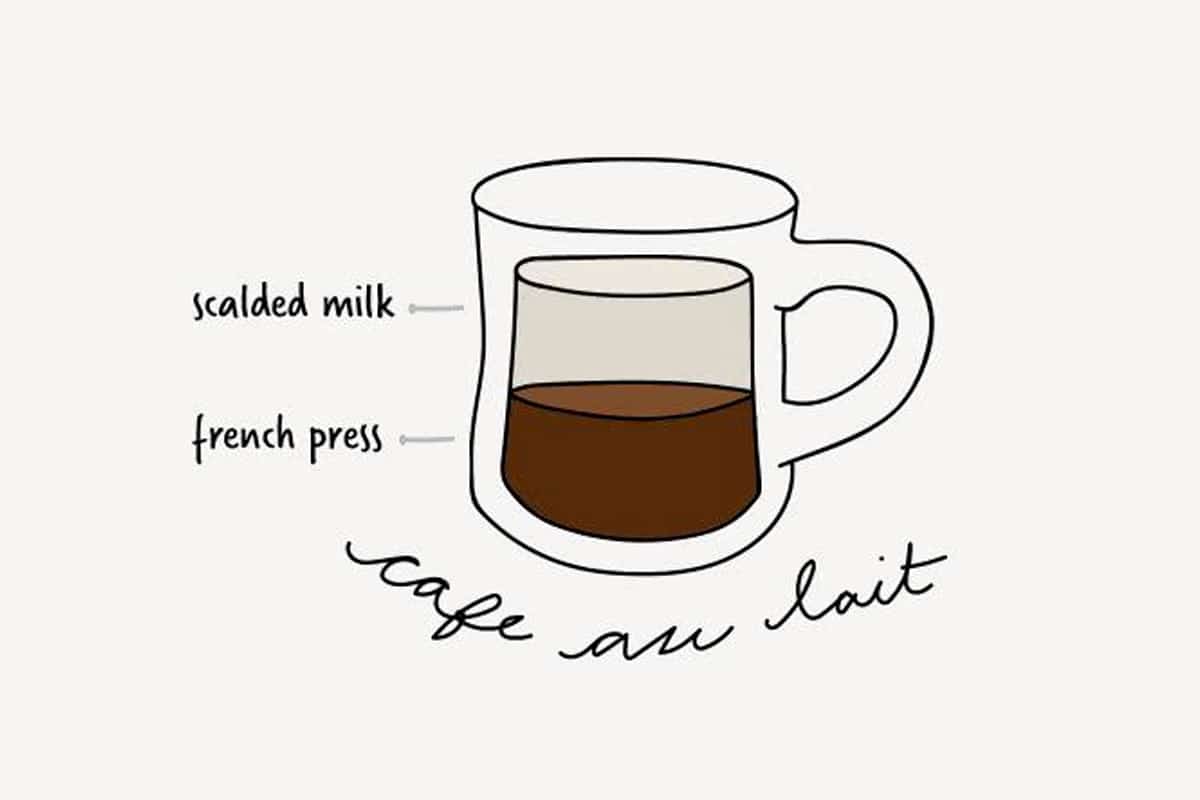
15. Café au Lait
Pronounced “cafe oh ley”, is typically made with French press coffee instead of an espresso shot to bring out the different flavours. It’s then mixed with scalded milk and poured at a 50/50 ratio. The bad boy is perfect for those seeking a simple coffee with but with more savour. Tip: ask the barista to add some warm milk when ordering this coffee and you’ll be set for your day.
Ratio: 150 ml French press coffee + 150 ml scalded milk
Cup: 300 ml
Temperature: 65-70C
Place of origin: France

16. Lungo
You may think that the lungo is another type of coffee, but it’s the new espresso. Lungo shots are in the 1:3 range or even higher. In its preparation, the brew ratio is increased, its clarity increases, and body and layer decrease. The Lungo is characterised as less body and is more bitter than an espresso. Many caffeine junkies order a lungo to enjoy a slightly less intense form of espresso.
Ratio: 1 shot of espresso
Cup: 50-60 ml
Temperature: 90-95C
Place of origin: Italy
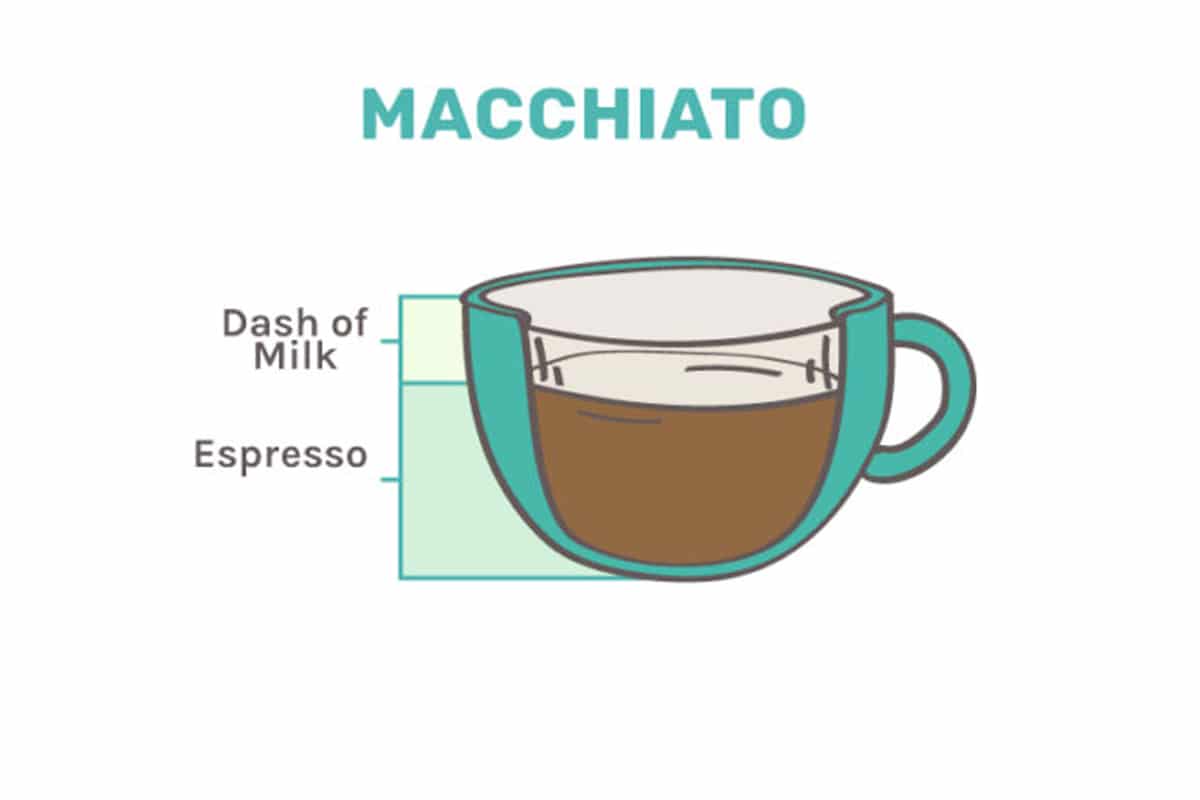
17. Macchiato
The macchiato is another espresso-based coffee that’s topped with foam. It’s the halfway house between a cappuccino and a doppio. And its name means “mark” in Italian, and that’s because of the mark that the steamed milk leaves on the surface of the espresso as it’s poured into the cup. Flavouring syrups are also added to this type of coffee — but that’s to your preference.
Ratio: 1 shot of espresso + 1-2 teaspoons of steamed milk
Cup: 80-100 ml
Temperature: 90-95C
Place of origin: Italy
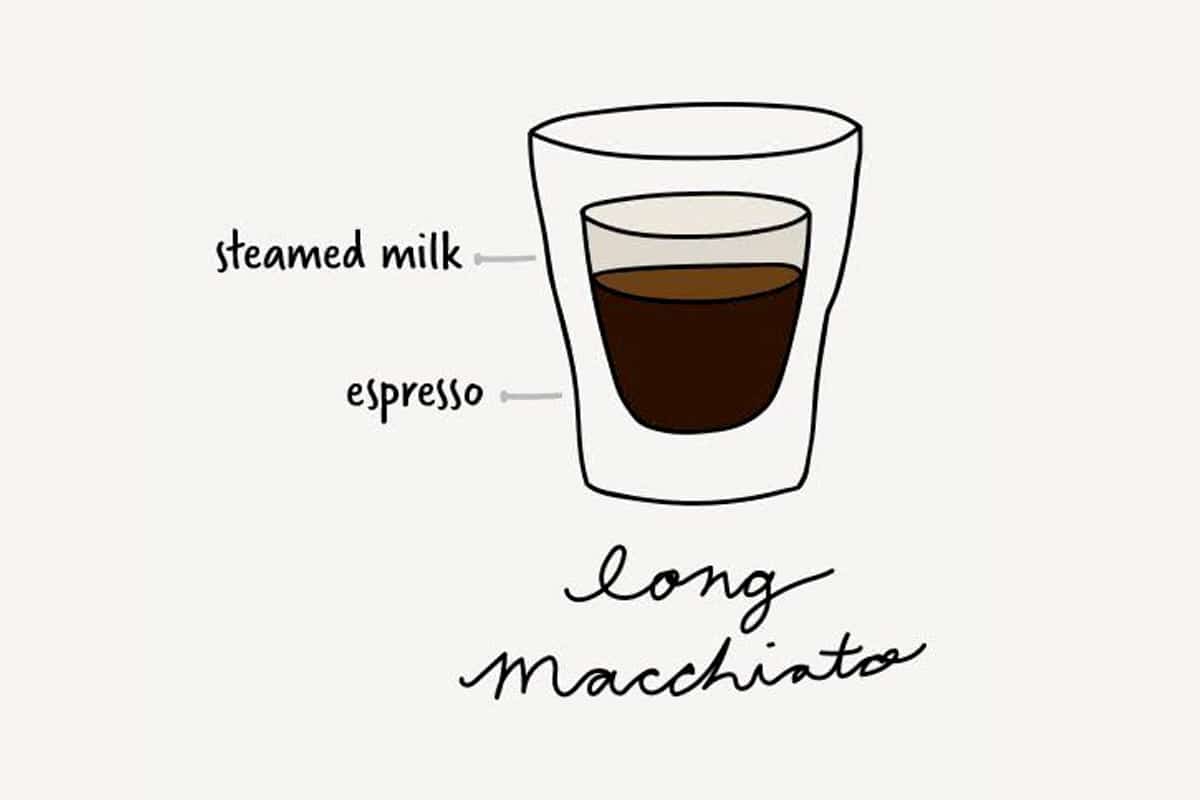
18. Long Macchiato
The long macchiato is a simple, short and strong coffee that’s made from espresso shots with a splash of milk, or occasionally a layer of foam. Ordering a long macchiato will get you something different depending on your locality in Australia. And with these variations, it’s important to note to be specific when ordering to keep clear of a bad coffee experience.
Ratio: 2 shots of espresso + 2-4 teaspoons of steamed milk
Cup: 150 ml
Temperature: 90-95C
Place of origin: Italy
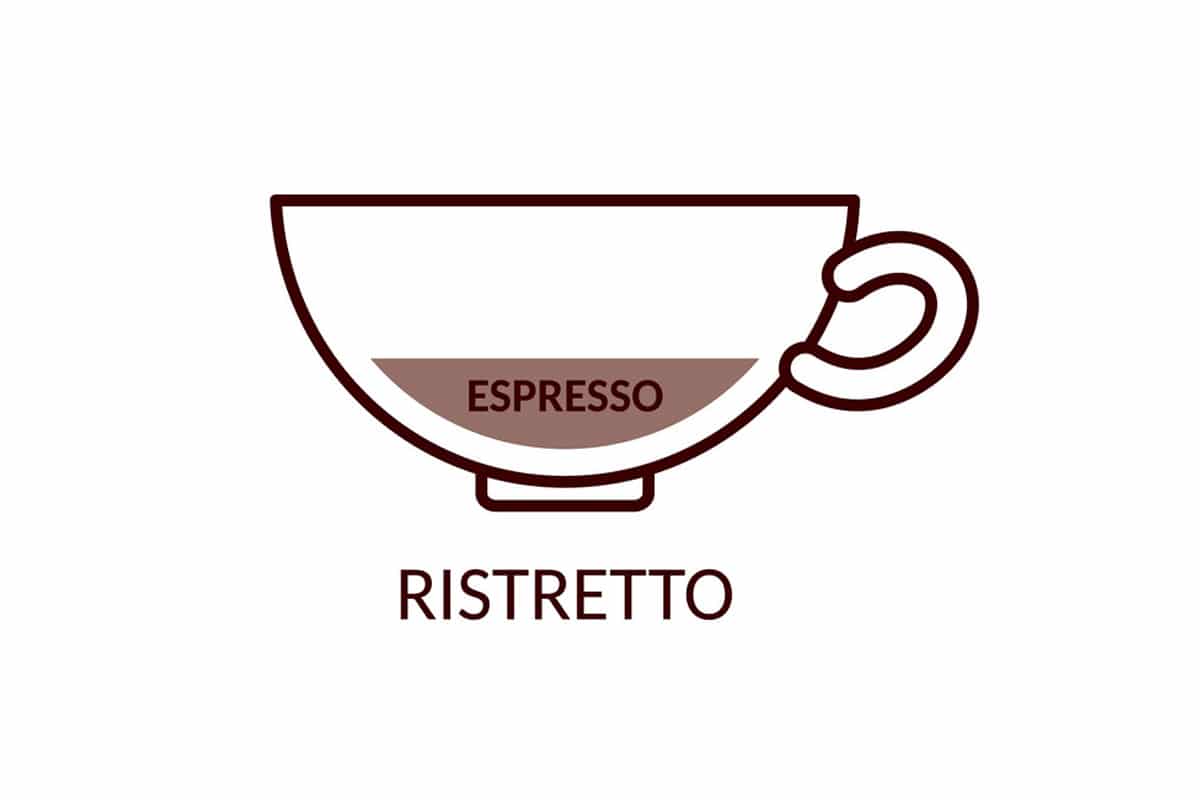
19. Ristretto
Ristretto is simply half of a shot of espresso. The result? A more concentrated coffee with an exquisite balance of elements than the regular espresso. The colour of a ristretto is similar to dark chocolate, while the crema is fainter than in espresso. It also has a sugarier taste when contrasted to the bitterness of a shot of doppio & espresso. Ristretto is a type of coffee worth trying.
Ratio: 1:2 (15 g of coffee to every 30 ml of water)
Cup: 150-200 ml
Temperature: 90-95C
Place of origin: Italy
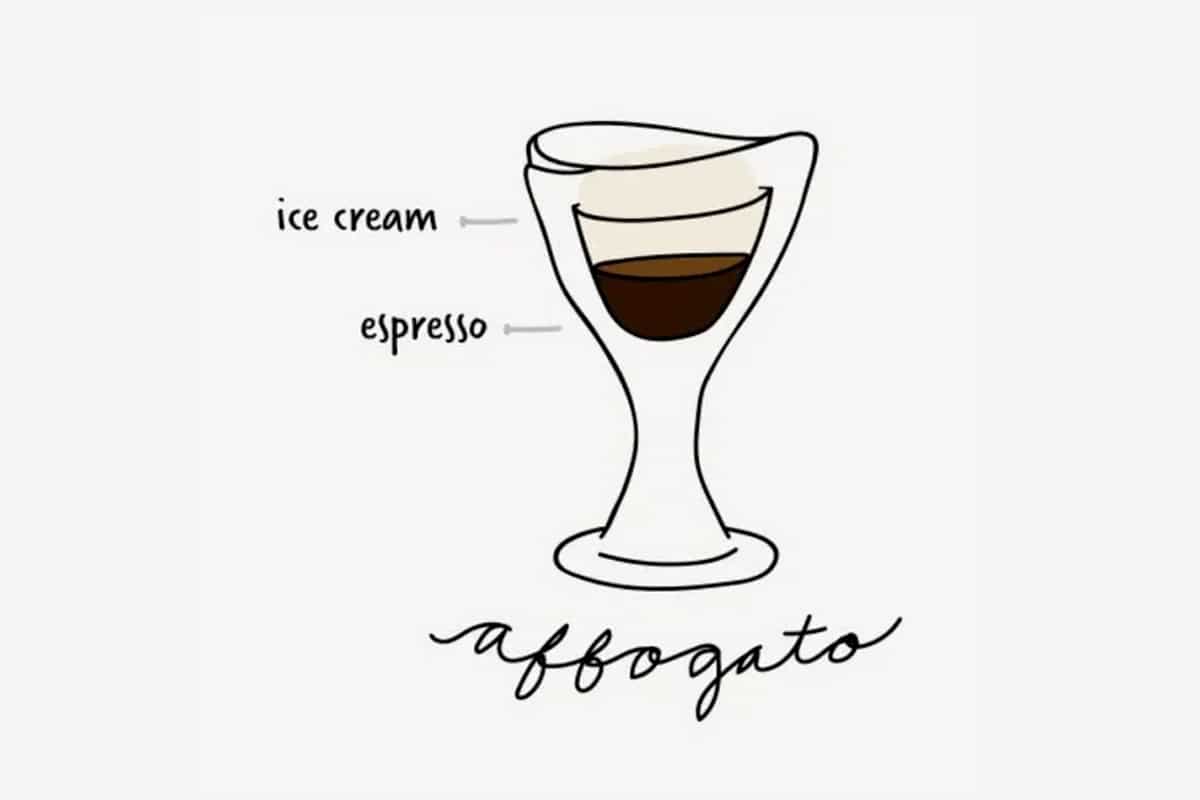
20. Affogato
This coffee is the only excuse for you to enjoy a scoop of ice cream during the day. Affogatos are more of a dessert coffee than a regular cup of coffee. In fact, they add a twist to your caffeine. The affogato is connected by dashing 1-2 shots of espresso over a scoop of vanilla ice cream; this yields a dessert beverage, a heavenly treat waiting to be devoured.
Ratio: 1-2 shots of espresso + 1 scoop of vanilla ice cream
Cup: 150ml-200 ml
Temperature: 30-50C
Place of origin: Italy
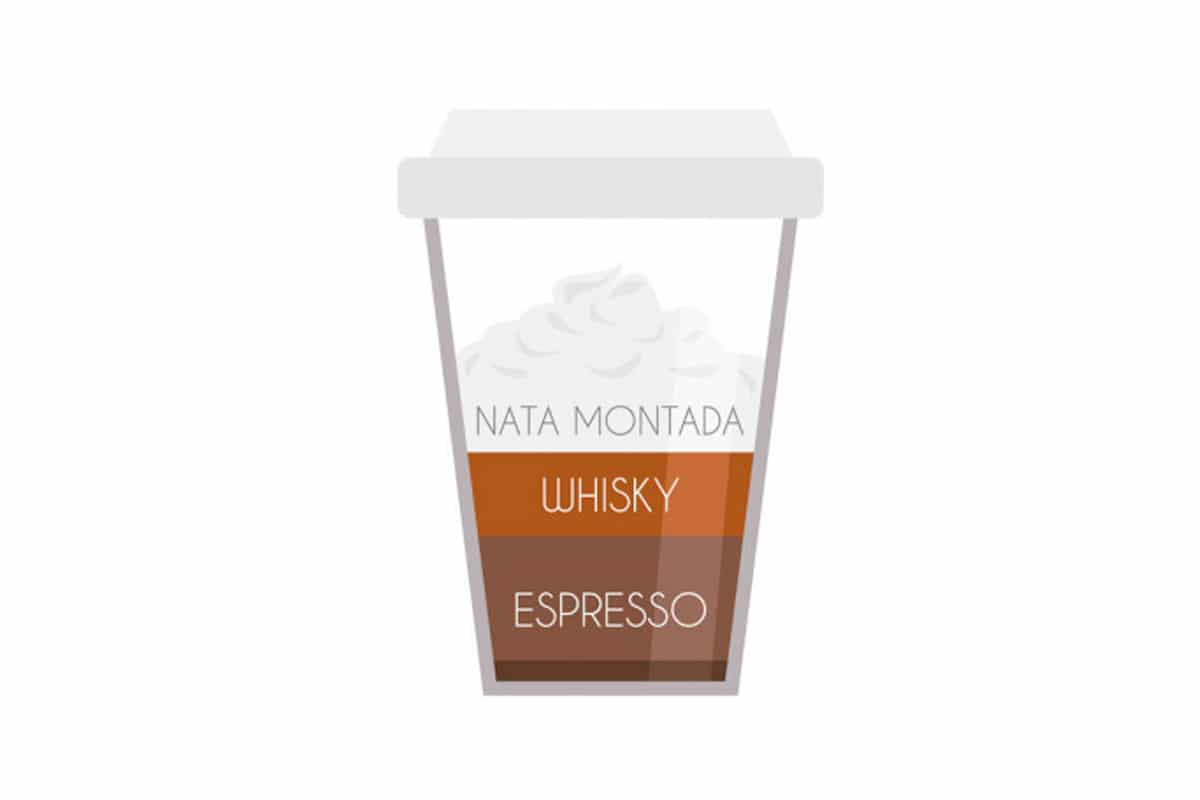
21. Irish
Hot coffee, sugar, whipped cream, and whiskey — that’s what Irish coffee is all about. The Irish have always been renowned for their whisky and inebriation. But when it comes to Irish coffee. The creaminess of it gives a nice mouthfeel that sticks to your palate like velvet. And while holding the cup, you feel your hand thawing out from the frost!
Ratio: 1 teaspoon of sugar + black coffee + thick cream
Cup: 200-230 ml
Temperature: 50-60C
Place of origin: Ireland
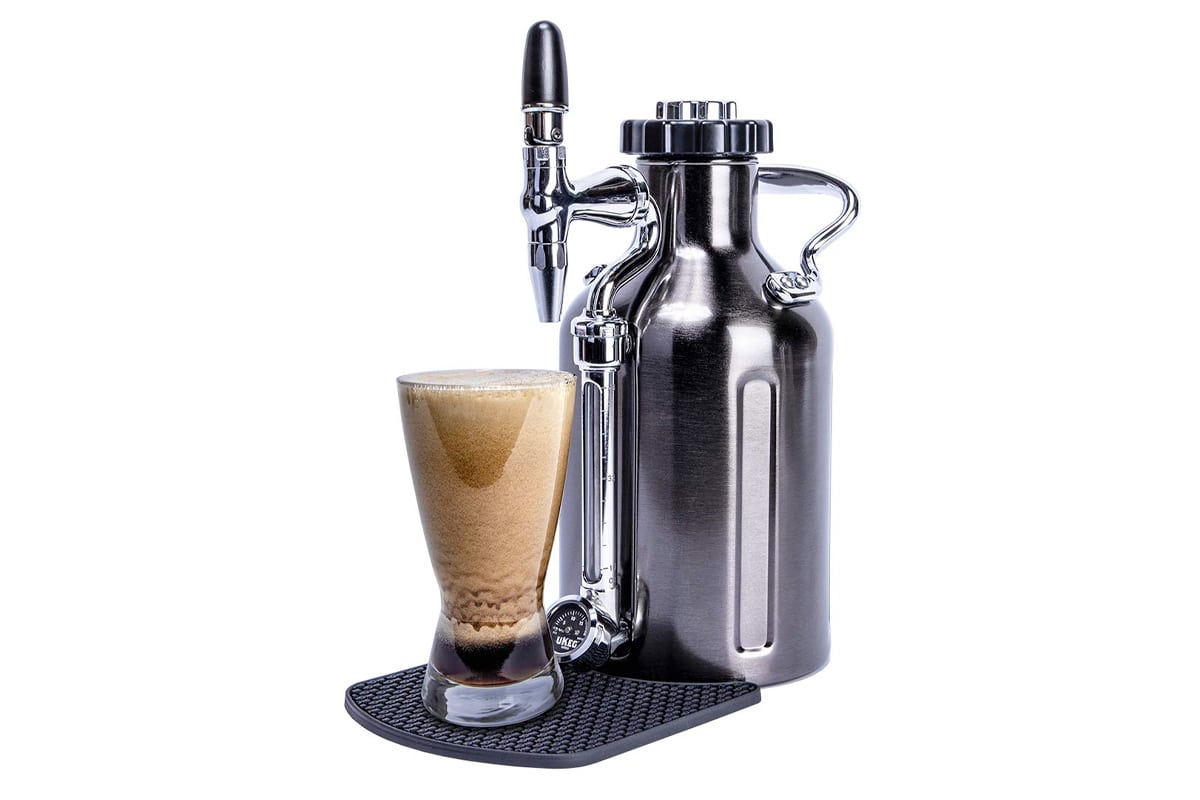
22. Nitro
Characteristically, nitro is something we wish to be — smooth, clean and cool. It’s a variation of cold-brewed coffee that employs nitrogen gas to yield a cold coffee drink that’s dense, creamy and a tad sweet and surprisingly has no dairy nor sugar! It’s this miraculous texture that has quickly become a favourite among coffee connoisseurs.
Ratio: 1:15 (1 part coffee to 15 part water)
Cup: 300-350 ml
Temperature: -5C
Place of origin: America
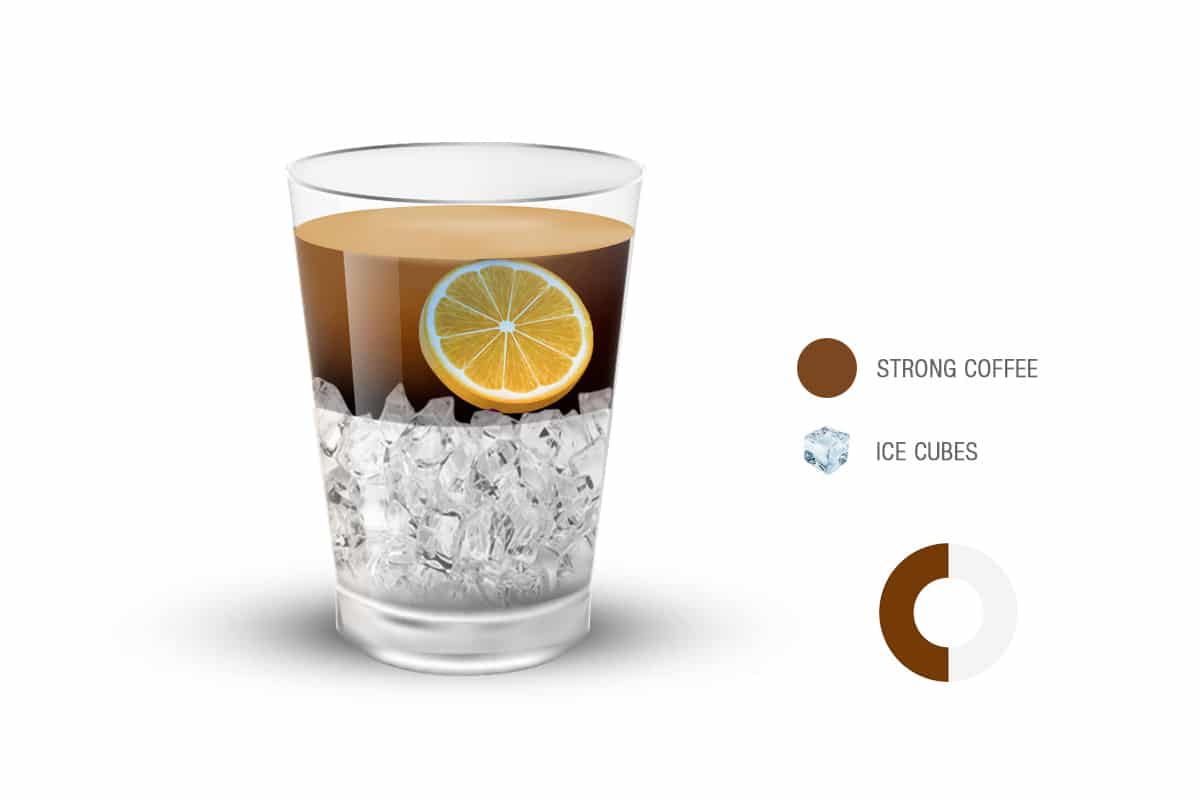
23. Mazagran
Mazagran isn’t your typical iced coffee, in fact, it’s the O.G iced coffee. It consists of a shot or two of hot espresso which is then dashed over ice. It’s a cold, sweetened coffee drink that has several variations. But whatever the case, the mazagran is known for its citrusy acidity and strong flavour of espresso. So if you’re seeking a cold caffeine kick, a mazagran will do the stuff.
Ratio: 1-2 shots of espresso + ice cubes + white granulated sugar
Cup: 100-150 ml
Temperature: -5C
Place of origin: Algeria

24. Vienna
Vienna is a type of coffee that’s traditional cream-based — and that’s a good thing for the palate. It’s made by preparing two shots of strong black espresso in a standard-sized coffee cup and infusing the coffee with whipped cream until the cup is filled to the rim. The cream substitutes the milk and allows the coffee flavour to be drawn through the cream. The result? Nirvana.
Ratio: 1-2 shots of espresso + 50 ml of whipped cream
Cup: 250-300 ml
Temperature: 90-95C
Place of origin: Austria
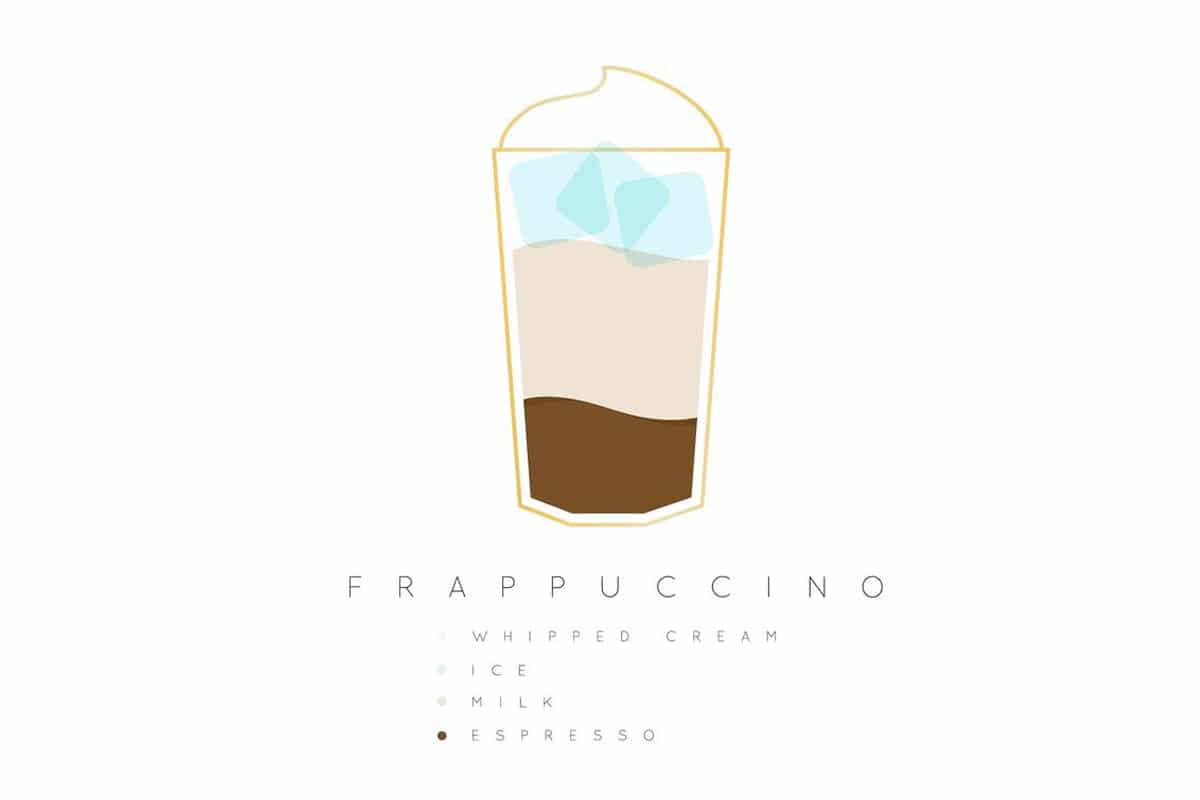
25. Frappuccino
Every millennial has heard of the Frappuccino. Its name is a portmanteau frappe and cappuccino and is a trademark brand of Starbucks. The beverage consists of blended iced coffee that’s layered with whipped cream, syrup and topped off with spices. It tastes like a chocolate milkshake, but better: because of the chocolate syrup mix and velvety creamy.
Ratio: 2.5 tbsp of coffee + 100 ml of water + whipped cream
Cup: 150-500 ml
Temperature: 50-70C
Place of origin: United States
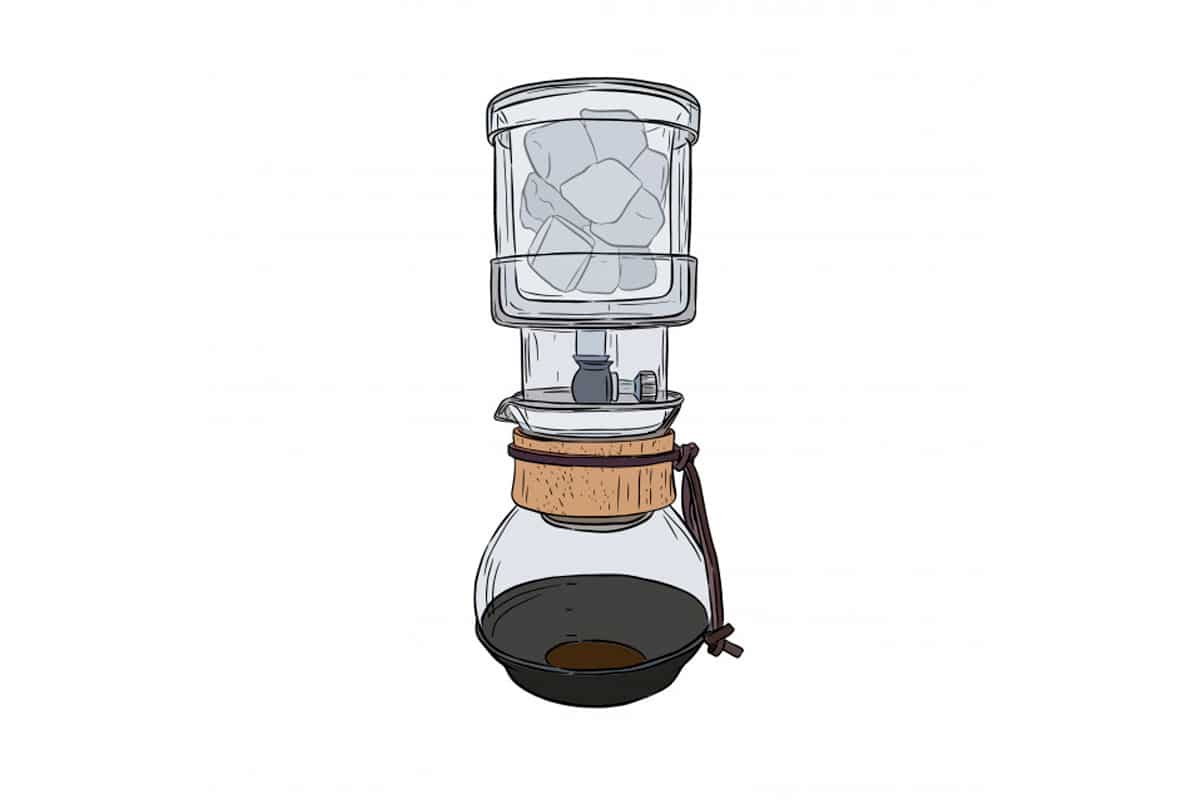
26. Cold Brew
Cold brew coffee has become more and more popular over the past decade. Unlike hot brewed coffee, which’s acidic and slightly bitter, cold brew is made with cool water and tastes slightly sweeter, a tad milder and is much less acidic than any iced coffee. Cold brew coffee is as simple as mixing ground coffee with cool water and steeping the mixture in the fridge overnight and can be washed down right away or stored in the fridge for weeks.
Ratio: 6g of coffee + 100 ml of water
Cup: 100-150 ml
Temperature: -5C
Place of origin: Japan
You’ll also like:
How to Make Cold Brew Coffee That Actually Tastes Good
17 Best Coffee Shops & Brands in Australia
General FAQs
A flat white is an Aussie coffee similar to a cappuccino but without a foam layer or chocolate powder. The flat consists of a shot of espresso mixed with hot water and one-third of steamed milk. Whereas the Italian-born latte is comprised of a shot of espresso and steamed milk with a hint of foam.
A cappuccino is usually made of one shot of espresso, one-third of steamed milk, one-third of foamed milk and is sprinkled with cocoa powder. While a latte is comprised of a shot of espresso two-thirds of steamed milk and a touch of foam.
Collectively, there are over 30 types of coffee from all across the globe. They also differ in type: iced coffee, kind of beans, the way they are concocted and the cup size that suits their flavour.
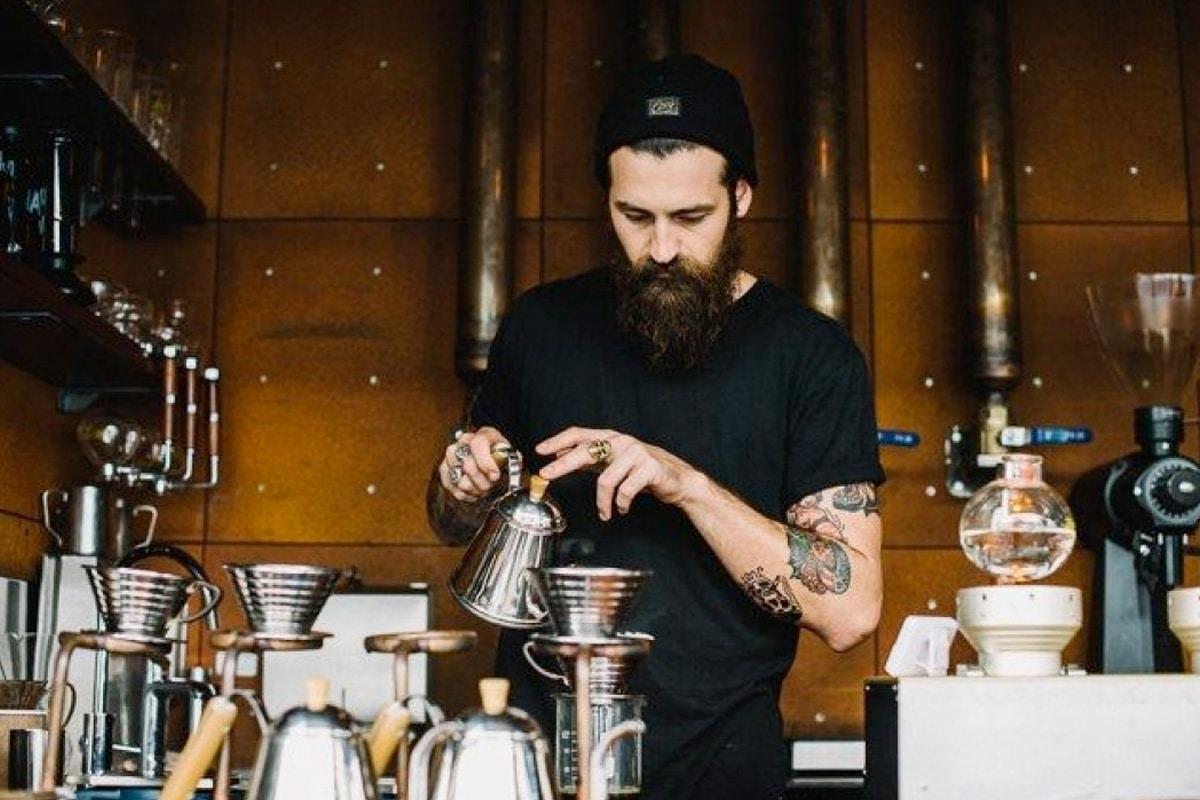






























Comments
We love hearing from you. or to leave a comment.